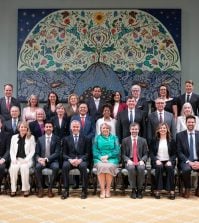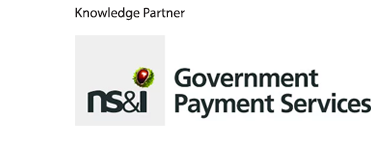Digital transformation baton passes to Canada after GovernmentDX event in Washington DC

Welcome to Global Government Forum’s monthly Digital and Data Monitor. This month’s newsletter includes some reflections on the GovernmentDX conference held in Washington DC last week – as well as looking ahead to our upcoming events in Canada and beyond.
And we want to hear from you about the innovations you are undertaking. Please get in touch to share the work you are doing to deliver more digitally focused government.
Richard Johnstone
Executive editor
Global Government Forum
In this month’s edition:
- Key takeaways from the GovernmentDX conference in Washington DC
- ‘Demos not memos’: Making change happen
- White House engages with government leaders
- Digital transformation baton passes to Canada
Key takeaways from the GovernmentDX conference in Washington DC
On 18 and 19 April, Global Government Forum hosted the GovernmentDX conference in Washington DC, bringing together world digital leaders to share insight and intelligence on how governments can use technology to drive innovation and deliver high-quality public services.
The first day of the event was an open conference, where almost 700 federal public servants heard from experts on topics such as improving the design and delivery of public services for customers; leveraging data and AI; modernising government technology; and integrating cybersecurity in government policy from the beginning.
Key takeaways from the session included the need to focus on human-centred design in government policy and delivery.
Read more: GovernmentDX 2024 – as it happened
Speakers discussed how to develop momentum around transformation in government – and the wider public service. Betsy Hawkings, a former fellow of the House Select Committee on the Modernization of Congress – which developed transformation proposals on how to drive better constituent-facing services – reminded attendees to “never underestimate the power of entropy”.
She said that there needs to be a driver for change – and the conference clearly illustrated the momentum for digital transformation that exists across the US federal government. Sessions examined the need to move from a project mindset – where standalone reform projects are implemented based on how government is organised – to a product mindset, where the focus is instead on how citizens engage with government services.
Indeed, a call for an increased focus on product management was among the key takeaways from Glorimar Ripoll Balet, the director of product, US Digital Service. Ann Lewis, the director of technology transformation services at the General Services Administration, agreed, highlighting that hiring more people with expertise in this area is key to transforming government.
‘Demos not memos’: Making change happen
One of the other takeaways from the conference was the importance of demonstrating how to deliver better government services, with Dana Chisnell, the executive director for customer experience from the Department for Homeland Security, saying there’s a need to “show not tell” – a point reiterated by Mark Vermeer, director of digital government in the Netherlands’ ministry of the Interior and Kingdom Relations.
Other speakers also highlighted the need to take action in government where possible, including pilot and demonstration projects – what Robin Carnahan, administrator of the General Services Administration, called focusing on “demos not memos”.
Carnahan and Mina Hsiang, administrator, United States Digital Service, both highlighted examples of good delivery in government – from direct file tax reform to the launch of COVIDtests.gov during the pandemic – in their session on moving from policy to action in digital transformation.
Getting leaders involved was also pinpointed as a key implementation building block.
One attendee asked how to get round the challenge in government that leaders often want outcomes set out at the start of projects, which hinders agile working.
Lewis was clear that it involves working closely with leaders. “Leaders want to make things work… they are open to ideas. Sometimes you need to adopt a leader and be their tech person,” she said.
Procurement was also flagged during the conference, with multiple speakers, including Chisnell, highlighting that technology procurement currently abides by the same process as procuring tanks or satellites – projects that take years. This should change, she said, noting: “We don’t have years” and can’t always set out the requirements in advance.
White House engages with government leaders
The day before the GovernmentDX conference, the global digital leaders that Global Government Forum had brought together in Washington DC were at the White House for a meeting on how to deliver a secure digital government experience.
This session, hosted by the Office of Management and Budget, the National Security Council and other federal agencies, focused on the critical nature of effectively delivering digital services.
Federal officials affirmed their commitment to engage with technology experts to digitally transform and modernise the way government provides services and experiences, building upon the Office of Management and Budget’s Delivering a Digital-First Public Experience guidance.
Speaking after the session, Nani Coloretti, deputy director, Office of Management and Budget, highlighted the need for international collaboration to share lessons and “deliver better, more equitable government services together”.
Jason Miller, deputy director of management in the Office of Management and Budget, said that in the past three years, the Biden-Harris Administration has made “tangible progress in advancing the delivery of excellent, equitable and secure federal services and customer experience,” adding: “By convening a gathering of digital government leaders from around the globe, we learn from one another, accelerate our collective progress, and build lasting partnerships to help us all on this journey to serve the people we care so much about.”
Clare Martorana, federal chief information officer – who also spoke at both days of GovernmentDX – added that: “In an era defined by rapid technological change, forming strategic digital partnerships across the globe is paramount.
“When we bring the brightest minds in digital transformation from around the world together, we solve complex challenges as a global community, allowing us to move faster in delivering results,” she said. “Today’s dialogue is not just about strengthening our own capabilities – it’s about using the power of technology to benefit people everywhere. This is why this inaugural gathering at the White House of the global leaders writing modern tech policy, advancing delivery, and scaling shared services is so vital – it signals our commitment to innovation that uplifts us all.”
Another session at GovernmentDX looked at how government can make the most of analytics and AI to unlock insight, and an upcoming GGF training seminar will take a deep dive into this issue.
Book now for Unlocking Insights from Data to Improve Policy and Decision Making on Thursday 25 April.
Digital transformation baton passes to Canada
Following the GovernmentDX conference, Global Government Forum will next convene the community of digital leaders together at the AccelerateGov and Global Government Digital Summit in Ottawa on 21 and 22 October.
At GovernmentDX, Tom Read, chief executive of the UK’s Government Digital Service, highlighted the Innovation 2024 conference that was hosted in March by Global Government Forum and the UK government, with digital leaders from all around the world brought together to share the challenges, opportunities and successes of their work.
“The thing that brings us all together is this laser focus on making government work better for users,” Read said. “So I’m absolutely thrilled that, having done this in London, we’re now passing the baton over to the US” for GovernmentDX.
Read more: Innovation 2024 as it happened – day 1 and day 2.

Following the second day of GovernmentDX, the baton was then passed from Martorana to Stephen Burt, chief data officer of Canada and assistant deputy minister of data and digital policy for the Government of Canada.
Burt took on the baton, inviting attendees at the meeting to join AccelerateGov and the digital summit “to continue this discussion about how we make everything we do more responsive and inclusive, building on what we’ve done here”.
Martorana closed the session by highlighting what she called the magic of these digital networking sessions convened by Global Government Forum.
“I think it’s going to be the beginning of a fair amount of transformation of our own environment with these incredibly dedicated people that I am honoured to serve with and I think you all probably feel that way about the folks in your own country,” she said.
Before we get to AccelerateGov, there is a GGF webinar linked to the event programme. Register now for the equipping public servants to succeed session on 6 July.




















